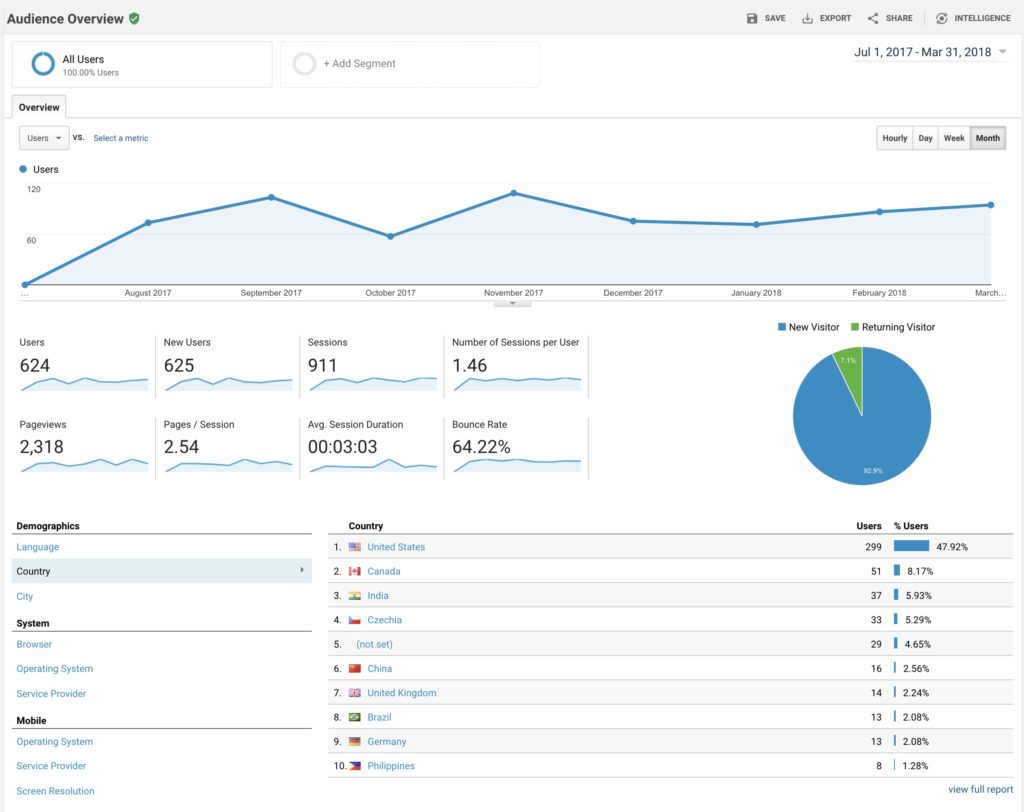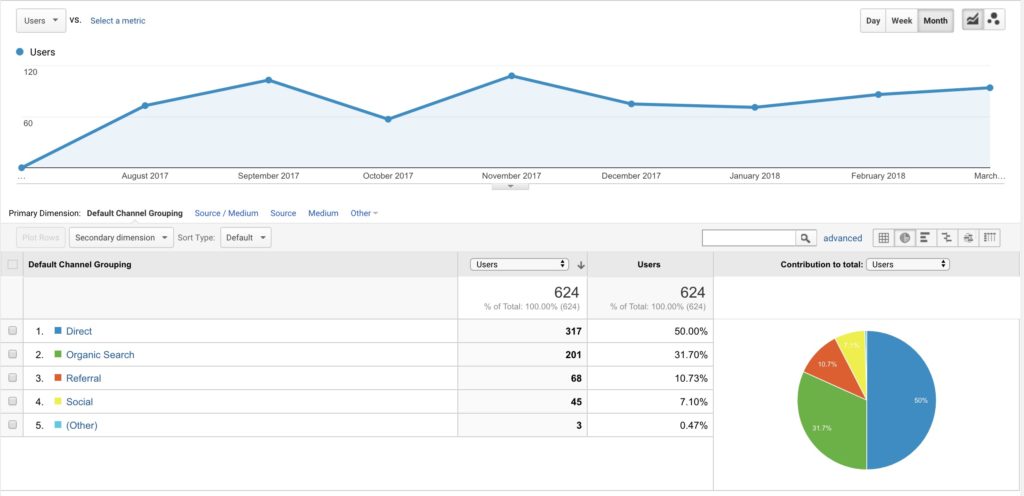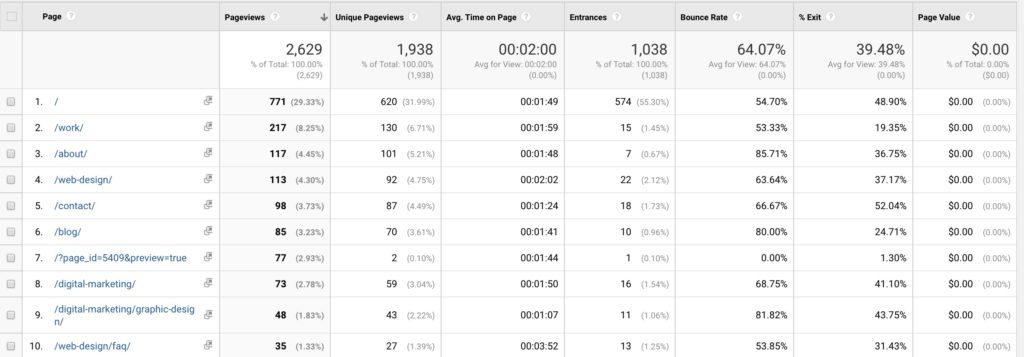What is Google Analytics?
Google Analytics is a free web tracking service offered by Google that tracks and reports website traffic, data, conversions, and more. Google Analytics is the most widely used web analytics service on the internet.
What are Important Things to Track
There is so much information inside Google Analytics that it can seem overwhelming. There are a few key pieces that I recommend everyone keeps track of no matter what type of business you are running.
Overall Audience Overview
You can view this by going to Audience > Overview

This is a basic overview page and allows you to see your traffic trends over time.
- See the general trends of the number of visitors
- Pages per website session
- Average session length of time
- Bounce rate
- Percentage of new vs returning visitors
- Types of Demographics, browsers & operating systems
Organic Search Keywords
You can view this by going to Acquisition > Campaigns > Organic keywords

Google blocks search terms when visitors are logged into their Google Accounts, which makes this one tricky. You might see (not provided) at the top with the most number of users. But, you may see a few organic keywords that could be helpful. It’s also really helpful to track the number of users each month that find you via organic search. You want to see that number increasing if you are working on SEO.
Traffic Channels
You can view this by going to Acquisition > All Traffic > Channels

Here you will find the number and percentage of all traffic that came from organic, direct (straight to your url), paid ads, referrals, social media, email, and other trackable links you’ve set up for marketing events. This is great information to have to track your traffic from the sources you are using to promote your website. You want your traffic coming from a varied of different channels!
Referrals
You can view this by going to Acquisition > All Traffic > Referrals

Referral traffic is the number of users finding your page through links on other websites. This is important because these links are sending potentially qualified visitors to your website from another trusted source- which has some major SEO benefits.
Conversions & Goals
You can view this by going to Conversions > Goals
Depending on your business, you’ll want to set up and start tracking different types of website goals. For basic websites, you might want to track contact form completions, eBook downloads, and certain page views. If you have an eCommerce/membership site you can track purchases, cart abandon rates, account creations and more!
Top Pages
You can view this by going to Behavior > Site Content > All Pages

You might be surprised by which pages on your website are the most popular. I think it’s important to improve these top pages by including call-to-action buttons, newsletter sign-ups, and more content you want your viewer to know!
These modules are a great place to start, but there is SO much more data you can collect in Analytics! You can drill down and dive deep into any aspect of your website. Other things that you can take a look at is your mobile traffic behavior, site content trends, visitor locations, site search behaviors, and visitor funnels. It just depends what you’re looking to learn more about your visitors and how they are using your website.
LR Design & Marketing has years of experience building websites and digital marketing plans for all types of industries from E-commerce, healthcare, technology, manufacturing, non-profits, and more. Let’s Chat!




